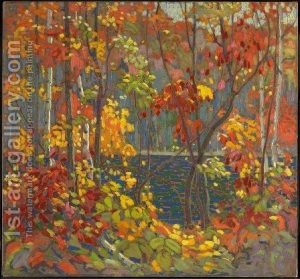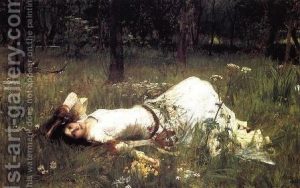Summary: The forest has been a source of inspiration for artists for centuries. Here are five paintings of forests that have left people captivated.
Landscapes are integral to the world of art. No matter how abstract the world of art wanders, no matter how many different materials and media artists use, somehow many of the world’s most famous paintings are of the natural world. This is especially true for the world of forest painting and paintings of woods. Hidden inside these realms, we can see fantastical worlds and the beauty of nature. We can also see the evolution of style, colour and technique in painting itself.
While there are literally thousands of paintings of forests, and many hundreds that many people recognize, here are just five that command attention. These forest paintings not only capture something ethereal of woodlands and the natural world, but are artistic feats in and of themselves.
1. Beech Forest Buchenwald I by Gustav Klimt
Beech Forest Buchenwald I is probably one of Gustav Klimt’s most famous landscapes, perhaps only rivaled by Apple Tree I. This painting is an incredible example of what set him apart from other painters and their own works. Here, you can see his unique brush technique creating an energetic and demanding piece.

In this painting, dense dots create a commanding texture contrasted by the flattened shapes of the trees themselves. The tension of vertical and horizontal lines also adds to the presence that the piece commands, and proves why Klimt is still such a powerful force in the world of art over a century later.
2. The Water Lily Pond aka. Japanese Bridge by Claude Oscar Monet
Monet is often hailed as the father of impressionism, the artistic movement that focused on capturing light and natural forms. The Water Lily Pond is perhaps his most famous and one of the highest examples of the artistic movement. In it, he used natural colouring and lighting to capture the natural beauty of his own personal water garden.

What makes this piece so important is when it was produced and the depiction of Monet’s technique. Painted roughly 15 years after his group of impressionists had split and headed their own artistic ways, this painting shows a commitment to his traditional fascinations. You can see the quick brushstrokes and dabs of pure paint in the flowers on the water, which lend to the serene beauty of the piece. It is a painting of retrospection, both on his own work and a movement now behind him.
3. The Pool by Tom Thomson
For Canadians, the Group of Seven are pillars in art; some of the highest examples of landscape painters in the entire canon. Their paintings tap into their love of Canada’s wild and rugged landscape, from the imposing beauty of the Rocky Mountains to the large swaths of untamed woodlands and prairies.

Tom Thomson is known for his love of the Ontario countryside and many of his works depict a woodland scene with broad strokes and powerful colours. The Pool is a perfect example of his technique and common subject – bright colours and captivating landscapes, painted with a love of his country and his home.
4. Ophelia 1889 by John William Waterhouse
Shakespeare has had a lasting impact on the world. For nearly 500 years, his plays and sonnets have captivated audiences, and his characters and ideas remain staples in the Western world. His impact is far beyond the stage, however, and perhaps there is no more famous painting than Ophelia 1889 for capturing one of his most enduring heroines.

In this famous woodland scene, Ophelia is waxing in a field, her pale skin and clothing providing a stark contrast to the natural and balanced colouring of the world around her. The artist, John William Waterhouse, is famous for blending together the major styles of his contemporary Italy, France and Britain. There are fewer better examples of this technique here, and certainly very few using such a lasting and famous subject.
5. Near the Lake by Pierre Auguste Renoir
Another impressionist piece, Near the Lake is an example of impressionists blending their modern life with natural beauty. Here, a professional rower engages in casual conversation with a young girl. His body language is relaxed, matching his quiet surroundings. You can see a similarity between Renoir and Monet in this piece but with an emphasis on the use of these spaces. Rather than untouched, Renoir showed people using what were once private gardens for public use. It is a piece that welcomes not only art lovers but, by its use of human subjects, everyday people as well.

Paintings of forests have long captured the minds and attention of art lovers and artists alike. There is something both serene and fascinating about works of art that play with or depict these settings. In them, we can find beauty and fear, the familiar and the fantastical. We can also find the changing trends and techniques of the history of art as well.
For those who would like these or other famous paintings of woods, visit 1st Art Gallery. We have a great selection of high-quality reproductions of these paintings, and more. Visit us today.






